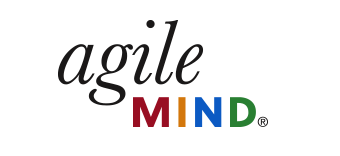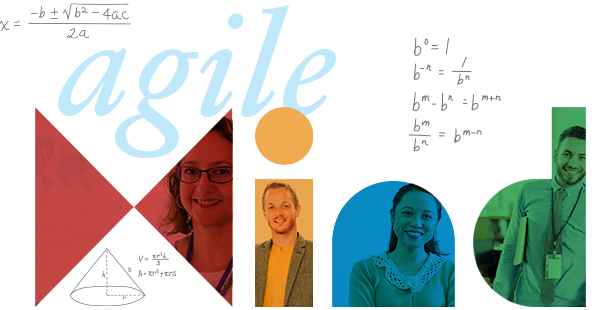Key steps for building a strong learning culture–for students and educators
NOVEMBER 1, 2023
By Agile Mind Marketing
If you step back from day-to-day challenges of your work, what does the ideal learning environment look and sound like to you? Do your classrooms and schools match your vision? Many leaders in our partner districts are reaching out to us and our Charles A. Dana Center colleagues to ask how to achieve a better match between vision and reality.
What is really known about how to build a strong classroom learning culture, particularly for middle- and high schools? Quite a bit, it turns out. The problem is less in what is known than in what we do with what we know. According to Shelly LeDoux, Director of Professional Learning & Implementation at the Dana Center, who has worked intensively with teachers and leaders in 20 states and in Department of Defense (DoDEA) schools throughout the world:
“Name an educator who doesn’t aim for students to experience a community
that is positive and inclusive and that empowers them to become expert learners. But such communities don’t happen by chance; they are intentionally built. Reminding ourselves of simple principles, and acting every day on those principles, turns out to be what successful educators and systems do to build strong learning cultures.”
1) Develop a shared sense of belonging and commitment—among students and educators
A strong learning culture is key to whether students feel that they belong—accepted, respected, and supported. A sense of belonging fades for many students after elementary school, yet it is associated with higher motivation, greater effort, and reduced absenteeism. Investing every day in creating a safe community, in which peers and teachers are viewed as allies, is essential for greater engagement and achievement.
Specifically, fostering beliefs in competence through effort helps create a secure sense of belonging. When this happens, students’ interest, commitment, and progress matter more than their perceived ability. Promoting a shared sense of belonging and commitment to effort helps students feel responsible for one another—and understand that a class can succeed or fail together and that everyone’s efforts matter.
In the Dana Center/Agile Mind Academic Youth Development (AYD) and Intensified Mathematics programs, students and teachers build a learning culture that develops students’ beliefs in themselves, and in their competence in math and beyond.
Hear what Agile Mind students say about developing belief in themselves.
Think of successes and challenges you and your colleagues have had in developing a sense of belonging among students. Have you reflected as a community of educators about what has worked and what has not?
2) Value diverse capabilities and viewpoints
A positive learning community supports diverse student capabilities by enabling all members to participate at their level of expertise and comfort. It’s characterized by feelings of safety among participants, as well as willingness to ask questions and make mistakes. A learning community is not just for people who seem to understand quickly, answer questions correctly, get the highest grades, and are the most popular.
Being an active participant is what makes a person a valued member of a learning community. Anyone can be an active participant in shaping the learning community, whether they are quiet or outspoken, confident or unsure.
Hear how Agile Mind teachers welcome all learners.
How do you actively welcome diverse student viewpoints and levels of confidence?
3) Develop personal relationships with students that are grounded in the work you do together.
Such relationships help you build a supportive learning environment and make students feel accepted and respected. Developing personal relationships can help educators engage students who are quiet, shy, or seemingly disengaged. When students know you and believe you know them, they are more willing to engage, and to take academic risks that drive their learning and their personal growth.
Here’s what Agile Mind students and their teacher have to say about personal relationships.
How do you develop personal relationships with students so they feel accepted and respected?
4) Establish processes and routines
Research shows that procedures and routines are vital for student learning, and this is particularly relevant for adolescents who need stability during the middle and high school years. Educators might employ routines for collaboration, examining student work, making sense of new academic vocabulary, or simply getting to know their students better.
For example, a routine of welcoming students each day sends the message that they are important. It reinforces their sense of belonging, which is crucial to students’ developing their identities as members of a learning community.
Hear from a teacher about the importance of structure – inside the classroom.
What processes and learning routines do you currently employ with students?
5) Teach students how to ask and answer questions effectively
It is crucial to create a culture where mistakes are a normal part of learning. Helping students understand how to ask and answer questions in a respectful way contributes to a safe learning environment. This promotes student participation, active engagement, and willingness to take academic risks.
Classroom norms that promote questions and discourse and value mistakes in learning help students feel welcome, regardless of their feelings of confidence or confusion. Mistakes are expected, respected, and inspected as a classroom norm can help students think differently about what it means to struggle.
How do you celebrate students’ questions, misconceptions, or mistakes?
6) Help students create and apply individual and common goals
By understanding students’ unique goals, you can incorporate information about them as individuals and their goals into the learning environment. Using goal-setting exercises consistently, such as creating and monitoring SMART goals, helps students connect their motivation and effort to their performance in school. And common goals help students connect with their peers and encourage a sense of belonging. They also help students hold each other accountable.
Hear from students about their goals and aspirations.
How do you leverage students’ unique goals? What kinds of common goals might increase students’ sense of belonging or accountability?
You may already know or even use some of these strategies. Applying them consistently and systematically, with the support and collaboration of other educators in your schools, will transform teaching and learning in all of your classrooms.
Contact us to learn more about Dana Center/Agile Mind programs that enable schools and educators to enact and sustain these practices, and share this information with your network through the links below.



